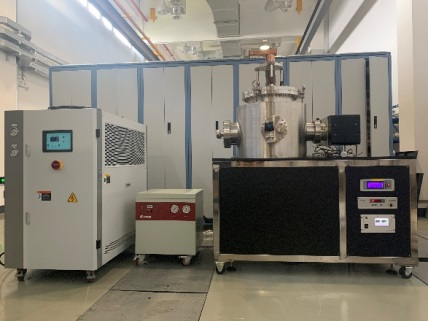The C-band cryogenic photoinjector is on R&D theoretically and experimentally by the team of Shanghai Synchrotron Radiation Facility (SSRF), CAS under the support from ANSO project. The current results are published in "Nuclear instrument and Methods A" and "Nuclear science and technique", which are the leading journals in particle accelerator. The papers investigate the RF properties of cryogenic accelerating structures from both simulations and specific experiments.
The photoinjector with high brightness and low emittance is an important topic in accelerating physics. In this research, the cryogenic photoinjector and the test platform is developed. The increase in frequency, Q factor, and coupling coefficient were observed, and the experimental results were well consistent with the simulation results.
The high performance photoinjector is the key equipment of accelerator facilities, such as XFEL, diffraction-limited storage ring (DLSR), and UED. However, the accelerating gradient of the room-temperature structure reached its limitation. As the crucial technology to promote the R&D of future advance light source, the cryogenic acceleration structure can improve the performance of the accelerator and shorten the length of the facility. For now, the SSRF team has carried out preliminary research on the cryogenic structure based on the mature C-band accelerating structure technology, and became make this success as second team after Japanese team.
The study results could provide strong technical support for high-power testing in subsequent research and other cryogenic structures. Following the strategy of the Belt and Road, and the framework of ANSO, the project is based on the collaboration between SSRF/SARI and SLRI in Thailand which aims to push the development and construction of SPS-II as new fourth generation light source in Thailand. The SSRF team has actively cooperated with SLRI team and conducted several technical workshops with SLRI, which has also undertaken some of the simulation and optimization work. The collaboration project is aiming to provide solutions of key technologies, and build up the professional team and excellent academic atmosphere for SPS-II construction. It can even provide technical support for the design and construction of advanced accelerator facilities in countries along the Belt and Road, in particular enhances and expands the influence of ANSO in the countries along the Belt and Road.
Project Objectives:
This project is aimed to develop key technology for future light source based on accelerator, and provide schemes for the design and construction of SPS-II. Consequently based on SPS-II, it can provide advanced research platforms in biology, medicine, environmental science, materials science, condensed matter physics, geoscience, chemistry and physics to address common global scientific and technological challenges at the forefront.
Moreover, the project will help to build up the professional team of accelerator, even transfer some techniques to Thailand for SPS-II construction. The project can significantly improve the science and technology level of accelerator along the Belt and Road, and promote scientific and technological cooperation between countries.
Writer: Cheng Wang, Wencheng Fang, Zhentang Zhao, Shanghai Advanced Research Institute, Chinese Academy of Sciences
Contactor: Cheng Wang, wangc@sari.ac.cn

